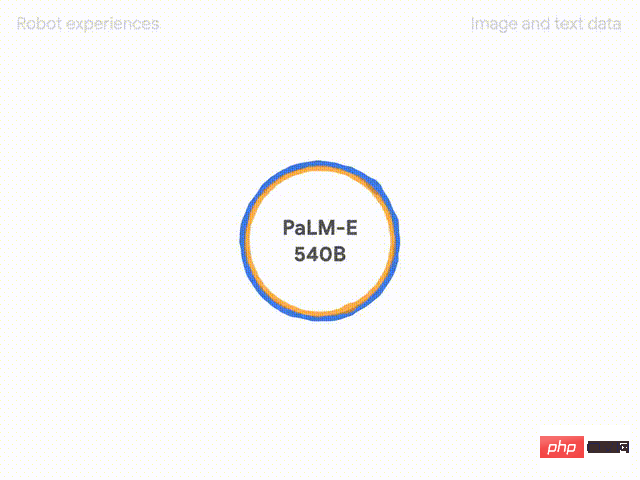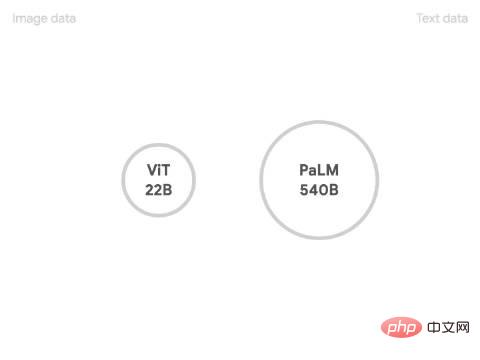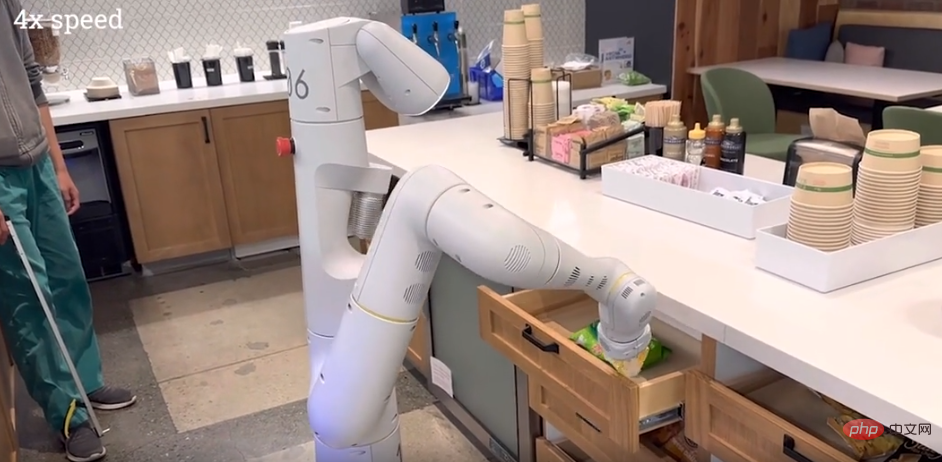Home >Technology peripherals >AI >562 billion parameters! Google releases PaLM-E, the largest 'generalist” AI model in history, allowing robots to autonomously perform a variety of tasks
News on March 8, on Monday, a group of artificial intelligence researchers from Google and the Technical University of Berlin launched the largest visual language model in history - PaLM-E, with a parameter volume of up to 562 billion (the parameter volume of GPT-3 is 175 billion).


PaLM-E is the largest known VLM (Visual Language Model). As a multi-modal embodied VLM, it can not only understand images, but also understand, generate language, and execute various complex robotic instructions without retraining. It also exhibits strong emergence capabilities (models that behave unpredictably).
According to Google, when given a high-level command, such as "Bring me the rice flakes in the drawer," PaLM-E can generate a mobile robot platform with an arm (developed by Google Robotics). Action plans and executing those actions yourself.

#PaLM-E achieves this by analyzing data from the robot’s cameras without pre-processing the scene. This eliminates the need for humans to pre-process or annotate the data, making robot control more autonomous.
PaLM-E is also flexible and able to react to its environment. For example, the PaLM-E model can guide a robot to fetch a bag of potato chips from the kitchen. Because PaLM-E is integrated into the control loop, it is resistant to interruptions that may occur during the task. In one video example, a researcher grabbed potato chips from the robot's hands and moved them, but the robot found the chips and grabbed them again.
In addition, the PaLM-E model can also control the robot to autonomously complete complex tasks that originally require human guidance. In addition to robotics, Google researchers also observed several interesting effects of using large language models as the core of PaLM-E. One of them is that PaLM-E can exhibit "forward transfer", which means that it can learn from a task. The acquired knowledge and skills can be transferred to another task, which can perform better than the single-task robot model.
Google researchers plan to explore more real-world applications of PaLM-E in the future, such as home automation or industrial robots, and hope that PaLM-E can inspire more applications of multi-modal AI.
IT House has reported that Microsoft, a strong rival of Google AI, also recently published a paper on "ChatGPT for Robotics", which combines visual data and large-scale data in a similar way. Language model to control the robot.
The above is the detailed content of 562 billion parameters! Google releases PaLM-E, the largest 'generalist” AI model in history, allowing robots to autonomously perform a variety of tasks. For more information, please follow other related articles on the PHP Chinese website!